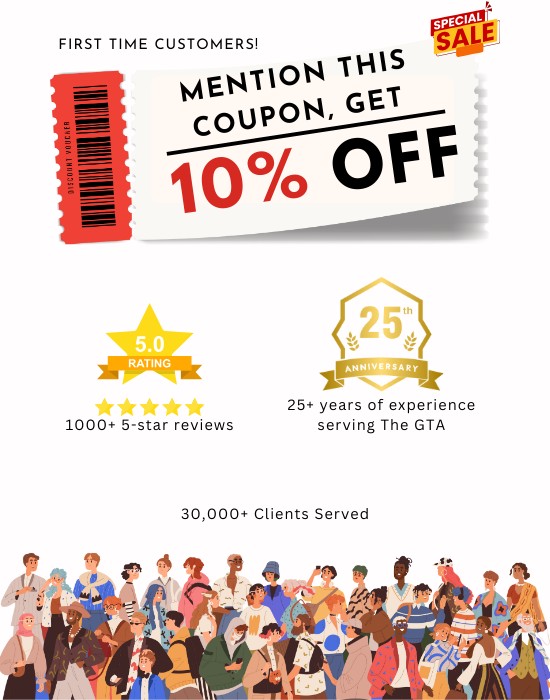Modern Urban Pressures and Rodent Behaviour
The city’s combination of historical and modern structures produces a wide range of rodent activity patterns. In century-old brick row houses near Kensington Market, deteriorated mortar joints often serve as entry points. By contrast, modern high-rises around Yonge-Dundas Square or Bay & King Street experience incursions through garage vents, mechanical chases, and shared utility voids.
Rodents prefer warmth and proximity to consistent food sources, which explains recurring infestations in commercial kitchens, food courts, and underground retail corridors. Mice are prolific breeders, capable of producing up to eight litters per year under ideal indoor conditions. Without timely intervention, populations expand exponentially, spreading from one suite or business to another through shared wall voids and ceiling spaces.
Inspection Protocols: Foundation of Effective Control
The foundation of every mouse management program begins with inspection and identification. Certified PMPs perform structured site assessments and visual inspections to locate harborage zones, droppings, gnawing evidence, and runways. Advanced tools, including infrared imaging, UV detection, and fiber-optic scopes, allow technicians to identify activity behind drywall or under flooring.
These findings are documented using pest pressure mapping, which is a core technique in modern IPM practice. By mapping active zones, technicians establish treatment priorities and monitor reductions over time. Older districts such as Queen Street West or Spadina & Dundas frequently require thorough crawl space and basement evaluations, as interconnected foundations allow rodents to migrate freely between units.
Each inspection also incorporates compliance checks under WHMIS (Workplace Hazardous Materials Information System) and Health Canada PCP labeling standards. This ensures that products used in subsequent treatments meet federal safety requirements and that re-entry intervals (REI) are clearly defined.
The inspection phase also identifies behavioral markers such as rubbing marks, greasy streaks left by repeated contact, and urine pillars, which indicate long-term nesting activity. Technicians may deploy non-toxic monitoring blocks, fluorescent dust, or tracking powder to confirm movement patterns in nocturnal environments.
Selecting the Right Control Methods
After inspection, technicians design a treatment plan that integrates multiple techniques rather than relying on a single control method. A balanced approach may include:
- Mechanical Trapping – The placement of snap traps, multi-catch traps, or glue boards along active runways and corners where thigmotactic movement occurs.
- Rodent Bait Stations – Use of tamper-resistant units containing Health Canada PCP-registered rodenticides with microencapsulated (ME) or biorational formulations for safer application in sensitive sites.
- Exclusion Work – Sealing utility penetrations, weep holes, door thresholds, and foundation cracks with durable materials such as steel mesh, expanding foam, or metal flashing.
- Sanitation Review – Evaluating food storage, trash rotation, and waste management practices that may contribute to pest pressure.
Commercial accounts, such as cafés near St. Lawrence Market or small retailers in the Distillery District, often require customized programs to balance public safety and operational continuity. In these environments, chemical applications are used sparingly and only where mechanical and exclusion methods cannot achieve full control.
Ethical and Environmental Considerations
Professional pest control in Toronto operates under both Health Canada PCP guidelines and Ministry of Natural Resources and Forestry (MNRF) oversight. These frameworks prioritize humane, environmentally conscious pest management. Products must be used according to label directions, and technicians must hold valid Structural Applicator Licenses issued by Ontario’s regulatory authorities.
Modern practices emphasize biorational pesticides, which are selective formulations that minimize risk to non-target organisms. Where possible, technicians favor habitat modification and physical exclusion over chemical reliance. This approach reflects the ethical standards promoted by both the NPMA and Canadian Pest Management Association (CPMA), which advocate for sustainable solutions that protect people, pets, and wildlife.
Localized Insight: Toronto’s Varied Structural Landscape
Across Toronto’s neighborhoods, distinct architectural conditions influence pest activity.
- In Parkdale and Queen Street West, vintage brick façades and shared service corridors provide classic harborage environments.
- Downtown districts like King & Spadina or University & Dundas face frequent reinfestation due to nearby restaurants and aging basements.
- Residential areas near High Park or Don Valley Trails often experience seasonal incursions during colder months as mice seek indoor shelter.
Understanding these environmental variables allows PMPs to tailor control programs to each property’s unique vulnerabilities, reinforcing both structural resilience and occupant safety.
Table 1. Average Service Costs and Program Structures (Toronto, 2025)
| Service Type |
Typical Cost (CAD) |
Inclusions |
Follow-Up Frequency |
| Residential Treatment |
$250–$600 |
Initial inspection, baiting, mechanical trapping, 30-day follow-up |
Every 3 months |
| Commercial Program |
$75–$200 per visit |
Scheduled monitoring, sanitation review, IPM compliance logs |
Monthly |
| Annual Maintenance Plan |
$400–$900 |
Quarterly inspections, bait station mapping, exclusion checks |
Quarterly |
These values reflect industry averages reported by Toronto service providers surveyed under CPMA regional data (2025). Actual pricing varies based on building size, infestation severity, and follow-up requirements.
Performance Verification
Professional accountability remains a core principle of reputable service delivery.
Each site receives a Service Log or Pest Control Logbook documenting treatment products, batch numbers, technician credentials, and observed results. Data from trend analysis and threshold monitoring confirm measurable progress, ensuring clients understand that control is both science-based and verifiable.
For instance, field studies by NPMA-certified technicians indicate that comprehensive IPM programs, combining structural exclusion, mechanical trapping, and limited rodenticide use, achieve over 90 percent population reduction within the first 30 days when followed by consistent maintenance.
Transition to Long-Term Prevention
Once the immediate population is under control, Toronto pest professionals shift focus toward sustainability. Long-term programs emphasize habitat modification, sanitation, and preventive monitoring. This transition is vital, as even a single unsealed utility gap can reintroduce a colony within weeks.
Collaboration between PMPs and property managers forms the backbone of effective prevention. Regular sanitation reviews, structural audits, and client education sessions maintain vigilance throughout the year. As rodent pressures rise during winter months, proactive clients benefit from quarterly service agreements that combine inspection with exclusion verification.









